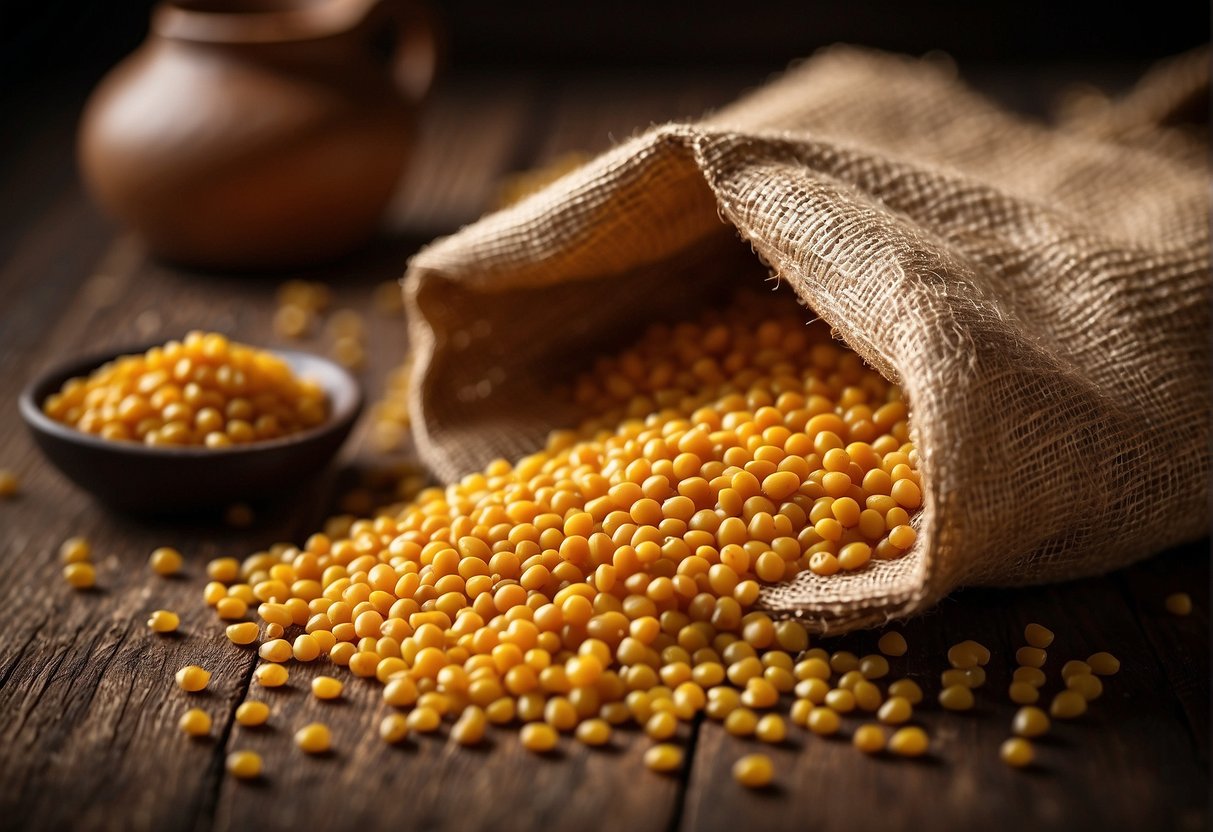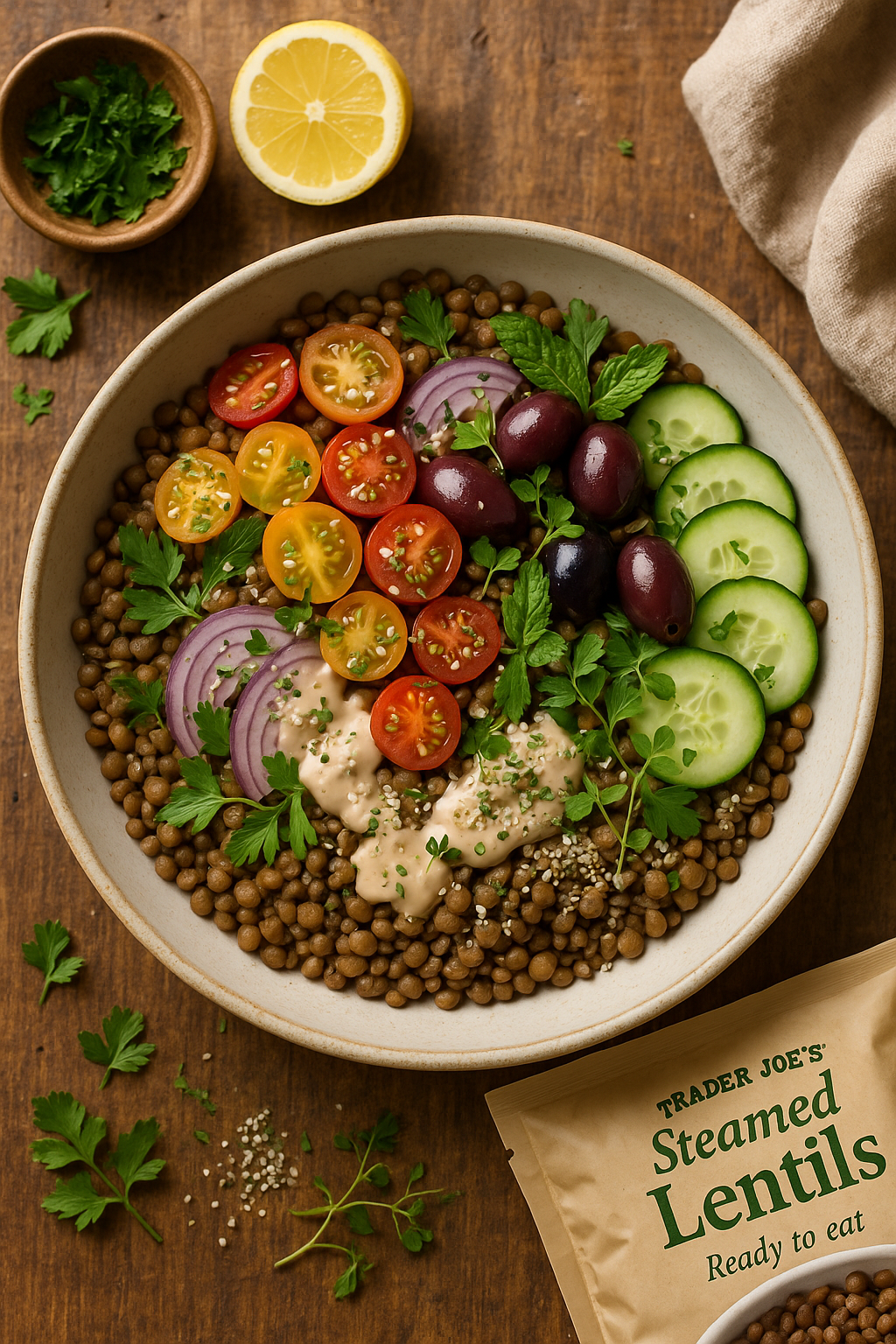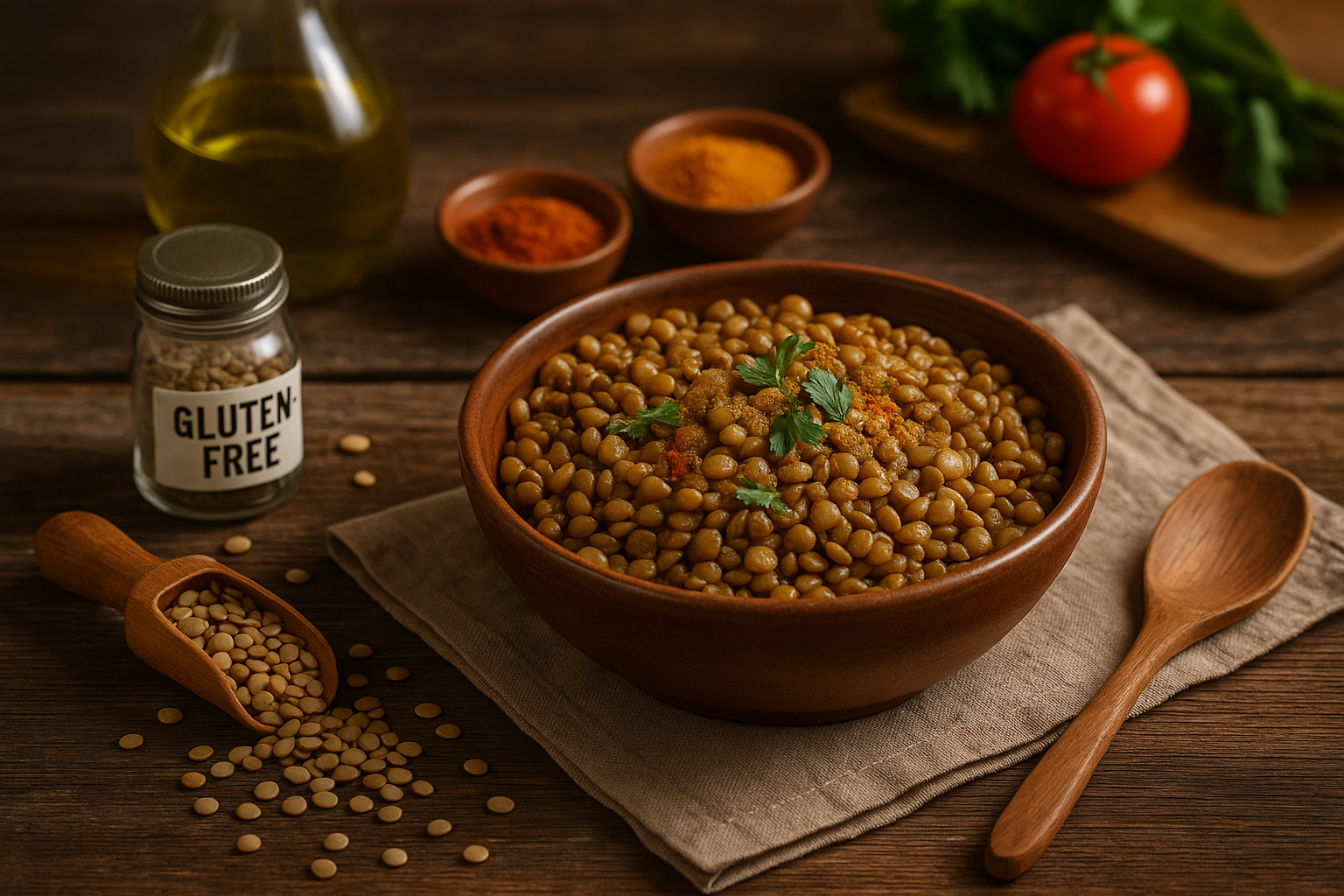I still remember the afternoon my son Christopher wrinkled his nose at yet another bowl of brown lentils. He wasn’t enthusiastic about dinner that night. That evening, I discovered yellow lentils tucked away in the back of my pantry—a forgotten bag from an Indian grocery trip months earlier. Within twenty minutes, I had transformed them into a creamy, vibrant dish that Christopher not only ate but asked for seconds. Those small, golden split peas changed how my family eats.
What Makes Yellow Lentils Different
Yellow lentils are split and hulled versions of whole lentils, typically from the mung bean or masoor dal family. The splitting process removes the outer skin and divides the lentil in half, exposing the creamy golden interior. This transformation changes everything about how they cook and taste.
Unlike whole green or brown lentils that maintain their shape, yellow lentils break down into a soft, buttery consistency. The exposed interior absorbs flavors intensely while releasing starches that create natural creaminess without any dairy. Indian cooks have understood this for thousands of years, which is why yellow lentils form the foundation of countless dal recipes across the subcontinent.
The splitting also removes compounds in the outer hull that can cause digestive discomfort. While whole lentils contain more fiber, the split variety offers easier digestion for people transitioning to plant-based eating or those with sensitive stomachs.

The Nutritional Profile That Surprised Me
One cup of cooked yellow lentils provides approximately 18 grams of protein—comparable to three ounces of chicken but without saturated fat or cholesterol. The fiber content sits around 8 grams per cup, supporting digestive health and creating lasting satiety. With a glycemic index of just 32, they stabilize blood sugar rather than spiking it.
Yellow lentils deliver 90% of your daily folate needs in a single cup—essential for cell division and DNA synthesis. They also provide substantial iron (about 37% daily value), though I pair them with vitamin C-rich foods like tomatoes or lemon juice to enhance absorption. Magnesium, potassium, and B-vitamins round out their nutritional profile.
Why Yellow Lentils Became My Weeknight Solution
Weeknight dinners used to overwhelm me. With limited time and hungry family members waiting, I needed solutions that were both quick and nutritious. Yellow lentils solved this problem with elegant simplicity—they require no soaking, no planning ahead. From dry lentils to finished dish takes just 15-20 minutes, faster than most rice.
The consistency makes them incredibly versatile. On nights when I need comfort food, I cook them until completely soft and season them like mashed potatoes. When I want texture, I stop cooking for 12 minutes while they still hold slight firmness. This adaptability means one ingredient serves multiple purposes, reducing both my shopping list and mental load.
How They Compare to Other Lentil Varieties
Green lentils hold their shape beautifully and take 35-40 minutes to cook. I use them in salads where I want individual lentils visible and distinct. Their peppery, earthy flavor stands up to bold dressings.
Brown lentils are the workhorses—affordable, widely available, and versatile. They soften more than green varieties but don’t completely break down, making them ideal for soups. Cook time runs 25-30 minutes.
Red lentils behave similarly to yellow ones, breaking down quickly into creamy consistency in 12-15 minutes. The main difference is flavor—red lentils taste slightly sweeter while yellow lentils have a subtle nuttiness. Black beluga lentils hold shape like green lentils but offer richer, earthier flavor.
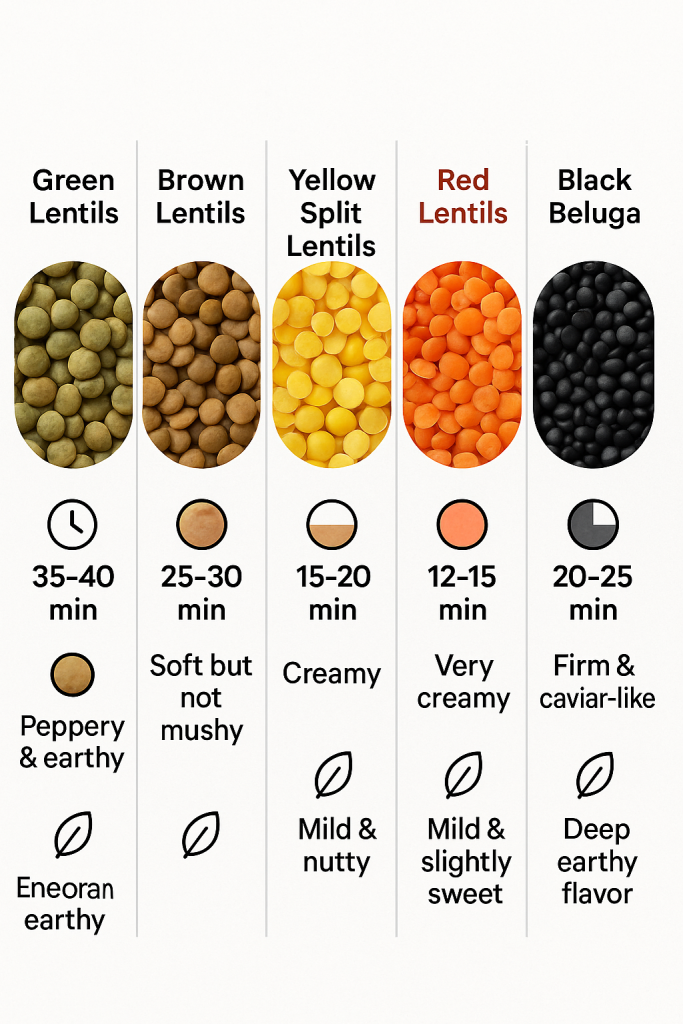
The Science Behind Their Creamy Texture
When you split and hull lentils, you expose the cotyledon—the seed’s energy storage tissue packed with starch granules. As these lentils cook, their cell walls break down quickly because they lack the protective outer layer that keeps whole lentils intact.
The released starches absorb water and swell, creating a gel-like consistency similar to how arborio rice makes risotto creamy. The starches also bind with any fats in your dish, whether from olive oil or coconut milk, creating a luxurious mouthfeel without heavy cream.
I control this creaminess through water ratios. For thick, spoonable dal, I use 2.5 cups water per cup of lentils. For soup consistency, I increase to 4 cups of water. The lentils continue thickening as they sit, so I often add extra liquid when reheating leftovers.
Why They’re Easier to Digest
Many people struggle with beans and legumes due to digestive discomfort and bloating. Yellow lentils offer a more comfortable experience because splitting removes many compounds that cause digestive distress.
Whole legumes contain oligosaccharides—complex sugars our bodies can’t fully digest. These reach our colon intact, where bacteria ferment them, producing gas. The outer hull contains the highest concentration. By removing the hull, split yellow lentils contain significantly less of these troublesome sugars while retaining beneficial fiber.
The split lentils also cook more thoroughly in less time, which further breaks down anti-nutritional factors like phytic acid and lectins. I’ve noticed that family members who avoid beans entirely can eat yellow lentils comfortably.
Shopping Smart: Finding Quality Yellow Lentils
Indian grocery stores offer the best prices—typically $2-3 per pound for high-quality moong dal or toor dal. The turnover is high, ensuring freshness. “Moong dal” refers to split mung beans with skin removed, while “moong dal chilka” retains the green skin.
Mainstream grocery stores stock yellow lentils in the international aisle or near other dried beans. Brands like Bob’s Red Mill and Goya are reliable, though prices run higher—around $4-6 per pound.
Bulk bins at natural food stores offer middle-ground pricing. I look for uniform color without excessive dust or broken pieces. Broken lentils aren’t harmful, but they indicate older stock. I also check for tiny stones or debris, though this is rare with modern processing.
Storage and Shelf Life Strategies
Dried yellow lentils last indefinitely when stored properly, though I aim to use them within a year for peak flavor. I keep mine in glass jars with tight-fitting lids, stored in my pantry away from direct sunlight and heat.
I label each jar with the purchase date and variety. This ensures I rotate stock properly, using older purchases first. After about 18 months, they require longer cooking times as they gradually lose moisture.
Cooked lentils transform my meal prep routine. Every Sunday, I cook a large batch—about three cups dried, yielding roughly eight cups cooked. I divide portions into glass containers, refrigerating what I’ll use within five days and freezing the rest in two-cup portions. Frozen cooked lentils last three months and thaw quickly.
Turmeric-Ginger Yellow Lentil Fritters with Herb Yogurt Sauce
These crispy fritters became a party favorite when I brought them to a potluck. Even confirmed meat-eaters couldn’t stop eating them. The yellow lentils create a creamy interior that contrasts beautifully with the golden, crispy exterior. Unlike traditional falafel made with chickpeas, these require no overnight soaking.
Ingredients:
For the fritters:
- 1 cup dried yellow lentils (moong dal or toor dal), rinsed
- 2½ cups water
- 1 teaspoon ground turmeric
- 1 tablespoon fresh ginger, finely grated
- 3 cloves garlic, minced
- 1 small yellow onion, finely diced
- 2 tablespoons ground flaxseed mixed with 5 tablespoons water (flax “egg”)
- ½ cup gluten-free oat flour or chickpea flour
- 1 teaspoon ground cumin
- ½ teaspoon ground coriander
- ½ teaspoon smoked paprika
- ¼ teaspoon cayenne pepper (optional)
- 1 teaspoon sea salt
- ½ teaspoon black pepper
- ¼ cup fresh cilantro, chopped
- 2 tablespoons fresh mint, chopped
- Avocado oil or coconut oil for pan-frying

For the herb yogurt sauce:
- 1 cup unsweetened plant-based yogurt (coconut or almond)
- 2 tablespoons fresh lemon juice
- ¼ cup fresh cilantro, chopped
- 2 tablespoons fresh mint, chopped
- 1 small clove garlic, minced
- ¼ teaspoon sea salt
- Pinch of black pepper
Instructions:
- Combine yellow lentils, water, and turmeric in a medium saucepan. Bring to a boil, then reduce heat to medium-low and simmer uncovered for 15-18 minutes until lentils are very soft and most water is absorbed.
- Transfer cooked lentils to a large mixing bowl and let cool for 10 minutes.
- Prepare the flax “egg” by mixing ground flaxseed with water. Set aside for 5 minutes to gel.
- Add ginger, garlic, onion, flax egg, flour, cumin, coriander, paprika, cayenne (if using), salt, and pepper to the cooled lentils. Mix thoroughly. Fold in cilantro and mint.
- The mixture should be thick enough to form patties. If too wet, add more flour one tablespoon at a time. If too dry, add water one tablespoon at a time.
- Form mixture into 12 patties, each about 3 inches in diameter and ½ inch thick.
- Heat 2 tablespoons of oil in a large skillet over medium heat. Add 4-5 fritters, being careful not to crowd the pan.
- Cook for 4-5 minutes per side until golden brown and crispy.
- Transfer cooked fritters to a paper towel-lined plate. Keep warm in a 200°F oven while cooking remaining batches.
- For the sauce, whisk together all ingredients in a small bowl until smooth.
- Serve fritters warm with herb yogurt sauce.
Nutritional Information (per serving, makes 12 fritters):
- Calories: 145
- Protein: 7g
- Fiber: 5g
- Fat: 5g
- Carbohydrates: 18g
- Iron: 15% Daily Value
- Folate: 25% Daily Value
- Magnesium: 12% Daily Value
Storage: Refrigerate cooked fritters for up to 4 days. Reheat in a 350°F oven for 10 minutes to restore crispiness. Freeze for up to 3 months.
How This Recipe Came Together
I created these fritters after several failed attempts at making traditional falafel from scratch. The overnight soaking and careful grinding felt too complicated for weeknight cooking. I wondered if yellow lentils could offer a simpler solution.
My first batch was too wet and fell apart in the pan. I learned that cooling the cooked lentils and adding enough binding flour makes all the difference. The second attempt lacked flavor depth, teaching me that bold seasoning is essential. By the third try, I’d perfected the technique.
Christopher called these “the golden crunchy things” and ate four in one sitting. Now they’re a monthly staple, perfect for meal prep since they reheat beautifully.
Cooking Techniques That Work
My yellow lentil cooking improved when I stopped treating them like other lentils. Starting with cold water and bringing everything to a boil together creates better flavor. The gradual temperature increase allows the lentils to release their starches more evenly.
The ideal water-to-lentil ratio is three parts water to one part lentils for standard dal consistency. I add salt only after cooking because adding it at the beginning can toughen the lentils and extend cooking time.
I never cover the pot completely during cooking. A partially covered pot allows steam to escape while retaining enough heat. A gentle simmer produces the best results—small bubbles barely breaking the surface rather than a rolling boil.
Seasoning Combinations That Work
Yellow lentils absorb flavors beautifully but can taste bland without proper seasoning. I build flavor in layers. I start by heating oil and adding cumin seeds until they sizzle.
After the cumin releases its aroma, I add minced ginger and garlic, cooking until fragrant but not browned. For Indian-inspired dishes, I include turmeric, coriander, and garam masala. For Mediterranean approaches, I use oregano, thyme, and smoked paprika.
Acid brightens yellow lentils dramatically. I always finish dishes with fresh lemon juice or apple cider vinegar. Fresh herbs added at the end—cilantro, parsley, or mint—provide aromatic lift that dried herbs can’t match.
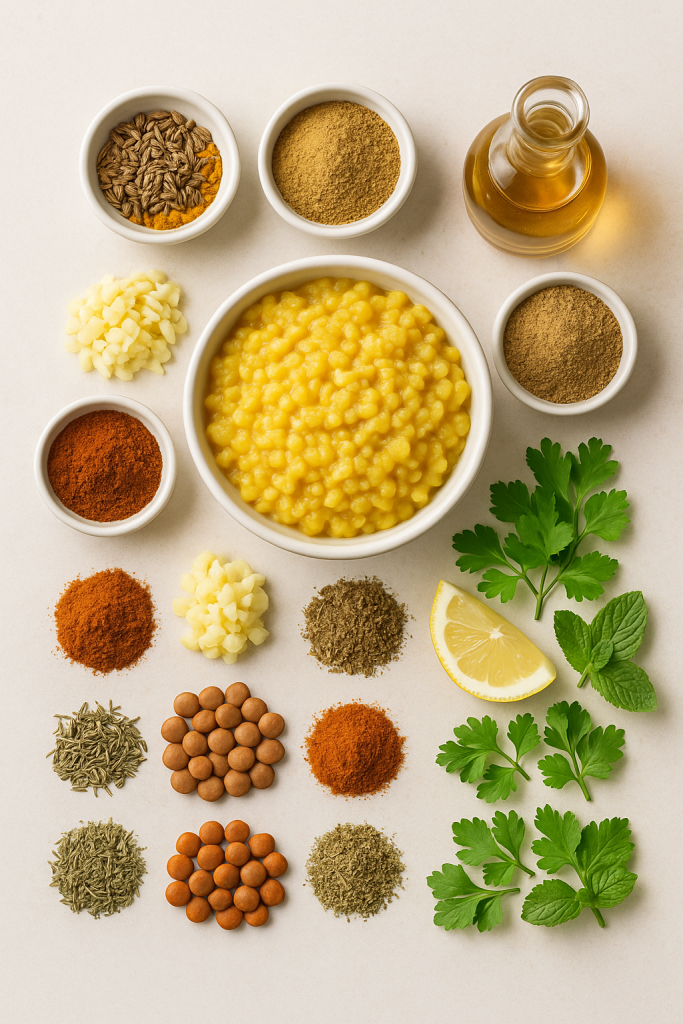
Health Benefits I’ve Witnessed
Six months after incorporating yellow lentils into our regular rotation, I noticed tangible changes in my family’s health. The combination of protein, fiber, and complex carbohydrates provides sustained fuel that keeps energy levels steady throughout the day.
My own cholesterol numbers improved at my annual physical, dropping from borderline high to well within normal range. The soluble fiber in yellow lentils binds to cholesterol in the digestive tract, preventing its absorption.
Digestive regularity improved for everyone. The prebiotic fiber feeds beneficial gut bacteria, supporting the microbiome that influences everything from immunity to mood. Meals including lentils left me feeling satisfied for hours, which naturally reduced snacking.
The Environmental Benefits
Producing one pound of lentils requires just 43 gallons of water compared to 1,800 gallons for beef—a 97% reduction. Every lentil meal I serve instead of meat represents tangible environmental benefit.
Lentil plants fix atmospheric nitrogen in soil through symbiotic relationships with bacteria in their root nodules. This natural fertilization reduces or eliminates the need for synthetic nitrogen fertilizers. Farmers who rotate lentils with other crops improve soil health while reducing input costs.
The carbon footprint comparison is equally striking. Lentil production generates 0.9 kilograms of CO2 equivalent per kilogram of protein, while beef production generates 27 kilograms—a thirtyfold difference.
From Pantry Staple to Family Favorite
That forgotten bag of yellow lentils in my pantry became a gateway to confident plant-based cooking. They taught me that nourishing food doesn’t require hours of preparation or exotic ingredients.
Three years later, yellow lentils remain my most-used pantry staple. I buy them in bulk, cook them weekly, and incorporate them into meals in countless ways. They’ve saved money, improved our health, and expanded our culinary repertoire.
Inside our growing My Nutrition Foods Facebook Group, I share these discoveries because I know countless families are where we once were—wanting to eat better but feeling overwhelmed. In our group, people take small steps, ask questions, swap recipes, and cheer each other on as they build healthier habits. Yellow lentils have become an accessible entry point for many who are just beginning their plant-based journey.
They’re affordable, nutritious, versatile, and genuinely delicious. If you haven’t tried them yet, this week is your opportunity. Buy a bag, cook them simply with your favorite spices, and discover why these golden legumes have nourished humanity for millennia.
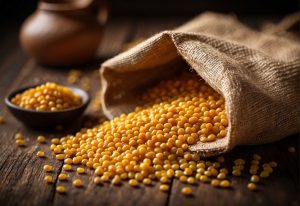
*We may earn a commission for purchases made using our links. Please see our disclosure to learn more.

